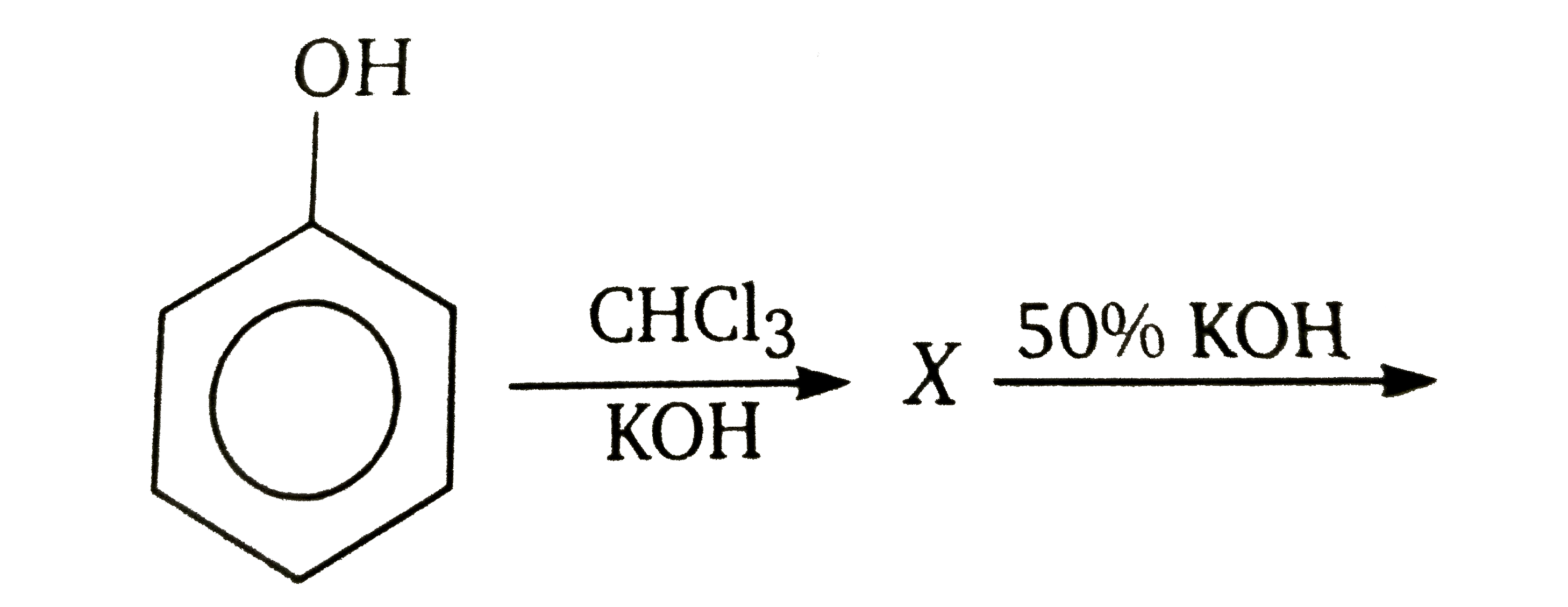Complete Solutions to CHEMISTRY of chapter MHTCET 2008 of Class 12 book with complete answers and questions
| Class 12 | CHEMISTRY |
| Chapter | MHTCET 2008 |
| MHTCET PREVIOUS YEAR PAPERS | CHEMISTRY |
| Number Of Questions | 50 |
| Academic Year | 2023-24 |
An isobar of `._(20)Ca^(40)` is
View SolutionThe point of dissimilarity between lanthanides and actinic is
View SolutionIn the reaction,
`2A+` dry silver oxide `overset(Delta)to` ether + `2AgX` here `A` is an
View SolutionGlucose molecule reacts with `X` number of molecules of phenylhydrazine to yield osazone. The value of `X` is:
View SolutionHow many alpha and beta particles are emitted when uranium `._(92)^(238)U` decays to lead `._(82)^(206)Pb` ?
View SolutionWhen acetamide is treated with `Br_(2)` and caustic soda, the paroduct formed is
View SolutionThe final product of the following reaction is/are

View SolutionWhat is the general electronic configuration of transition elements
View SolutionSolution A, B, C and D are respectively 0.1 M glucose, 0.05 M NaCl, 0.05 M `BaCl_(2)` and 0.1 M `AlCl_(3).` Which one of the following paris is istonic ?
View SolutionChloramine-R is a
View SolutionCell reactiomn is spontaneous when
View SolutionIf `Delta` E is the heat of reactin for
`C_(2)H_(5)OH(l)+3O_(2)(g) to 2CO_(2)(g)+3H_(2)O(l)` at constant volume the `DeltaH` (heat of reaction at constant pressure), at constant temperature is
View SolutionWhich one of the following species acts as both Bronsted acid and base ?
View SolutionFor the reaction : `H_(2)+I_(2)to 2HI,` the differential rate law is
View SolutionFollowing reaction:
`(CH_(3))_(3)C-Br +H_(2)O rarr (CH_(3))_(3)C-OH +HBr` is an example of -
View SolutionCalamine is
View SolutionEnd product of the following reaction is
`CH_(3)CH_(2)COOH overset(Cl_(2))underset(red P)to overset("alcoholic KOH")to`
View SolutionOn heating benzyl amine with chloroform and ethanolic KOH, product obtained is
View SolutionWhich of the following compounds is not chiral?
View SolutionWhich of the following ions is colourless in solution?
View SolutionThe most common oxidation states of cerium are
View SolutionThe number of ethers possible with the molecular formula `C_(4)H_(10)O` is.
View SolutionThe vapour pressure of pure benzene at a certain temperature is `640 mm` of `Hg`. A non-volatile non-electrolyte solid weighing `2.175 g` added `39.0 g` of benzene. The vapour pressure of the solution is `600 mm` of `Hg`. What is the molecular weight of solid substance?
View SolutionTerylene is a polymer obtained from
View SolutionWhich reactive intermediate is formed during the condensation reaction between acetaldehyde and formaldehyde ?
View SolutionFor a first order reaction, the half-life period is
View SolutionIf `C(s)+O_(2)(g)to CO_(2)(g),DeltaH=rand CO(g)+1/2O_(2)to CO_(2)(g),DeltaH=s` then, the heat of formation of CO is
View SolutionWhich of the following concentration factors is affected by change in temperature ?
View SolutionThe correct order of boiling point for primary `(1^(@)),` secondary `(2^(@))` and tertiary `(3^(@))` alcohols is
View SolutionThe purest zinc is made by
View SolutionAspirin is an acetylation product of
View SolutionFor the sequence of reactions, `Aunderset("ether")overset(C_(2)H_(5)MgI)rarrBoverset(H_(2)O //H^(+))rarr` tert-Pentyl alcohol. The compound A in the sequence is :
View SolutionA radioactive isotope having `t_(1//2)` =3 days was read after 12 days . If 3 g of the isotope is now left in the container, the initial weight of isotope was
View SolutionWhich of the following has the maximum penetrating power? a)`alpha`-particle b)Proton c)`gamma`-particle d)Positron
View Solution`Cu^(2+)(aq.)` is unstable in solution and under goes simultaneous oxidation and reduction according to the reaction
`2Cu^(+)(aq.)hArr Cu^(2+)(aq.)+Cu(s)`
Choose the correct `E^(@)` for the above reaction if
`E_(Cu^(2+))^(@)//Cu = 0.34 V and E_(Cu^(2+))^(@)//Cu^(+) = 0.15 V`
View SolutionSolubility of `Ca(OH)_(2)` is s mol `L^(-1).` The solubility product `(K_(sp))` under the same condition is
View SolutionAfter how many seconds will the concentration of the reactant in a first order reaction be halved if the rate constant is `1.155xx10^(-3)s^(-1)`?
View SolutionAn ester (A) with molecular formula `C_(9)H_(10)O_(2)` was treated with excess of `CH_(3)` MgBr and the complex so formed was treated with `H_(2)SO_(4)` to give an olefin (B). Ozonolysis of (B) gave a ketone with molecular formula `C_(8)H_(8)O` which shows positive iodoform test. The structure of (A) is
View SolutionWhich of the following is the weakest base ?
View SolutionRayon is
View SolutionThe pH of a 0.1 M solution of `NH_(4)OH` (having `K_(b)=1.0xx10^(-5))` is equal to
View SolutionTranquilisers are also known as
View SolutionThe compound, which give a positive ninhydrin test and a negative Benedict's solution test, is
View SolutionIodoform test is not given by
View SolutionWhich of the following solution will have highest boiling point ?
View SolutionThe IUPAC name of `H_(3)C-underset(OC_(3)H_(7))underset(|)(CH)-C_(3)H_(7)`
View SolutionFor a reaction, `A+2B to C,` rate is given by `+(d[C])/(dt)=k[A][B],` hence, the order of the reaction is
View SolutionWhich one of the following compounds react with methylamagnesium iodile?
View SolutionThe standard reduction potentials at 298K, for the following half cells are given:
`Zn^(2+)(aq)+2e^(-)hArrZn(s):E^(@)=-0.762V`
`Cr^(3+)(aq)+3e^(-)hArrCr(s):E^(@)=-0.740V`
`2H^(+)(aq)+2e^(-)hArrH_(2)(g), E^(@)=0.000V`
`Fe^(3+)(aq)+e^(-)hArrFe^(2+)(aq),E^(@)=0.770V`
Which is the stronget reducing agent?
View SolutionThe alcohol that produces turbidity immediately with `ZnCl_(2)`/conc. HCl at room temperature
View Solution
CHEMISTRY questions and complete solutions for chapter MHTCET 2008 of MHTCET PREVIOUS YEAR PAPERS AND PRACTICE PAPERS of Class 12